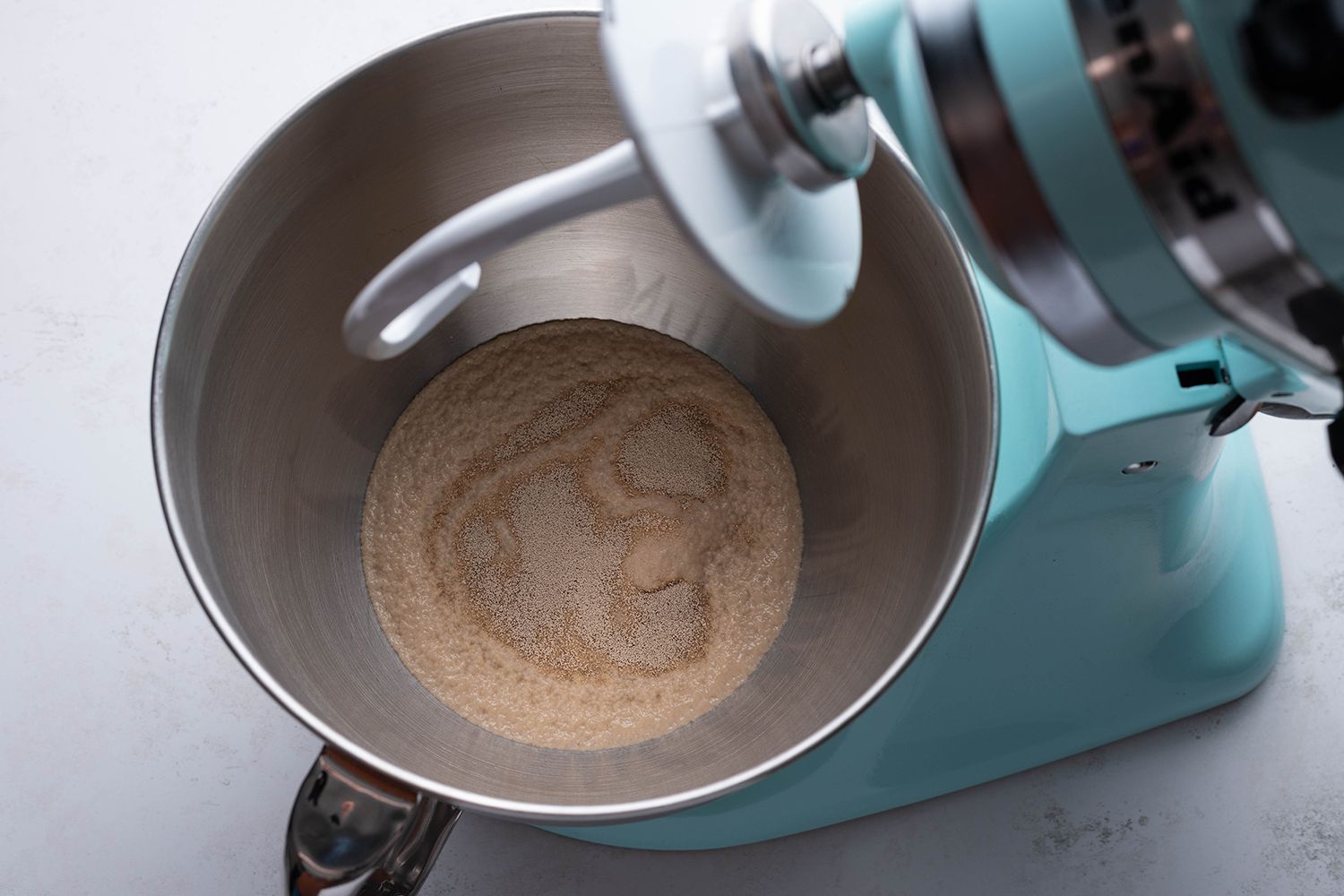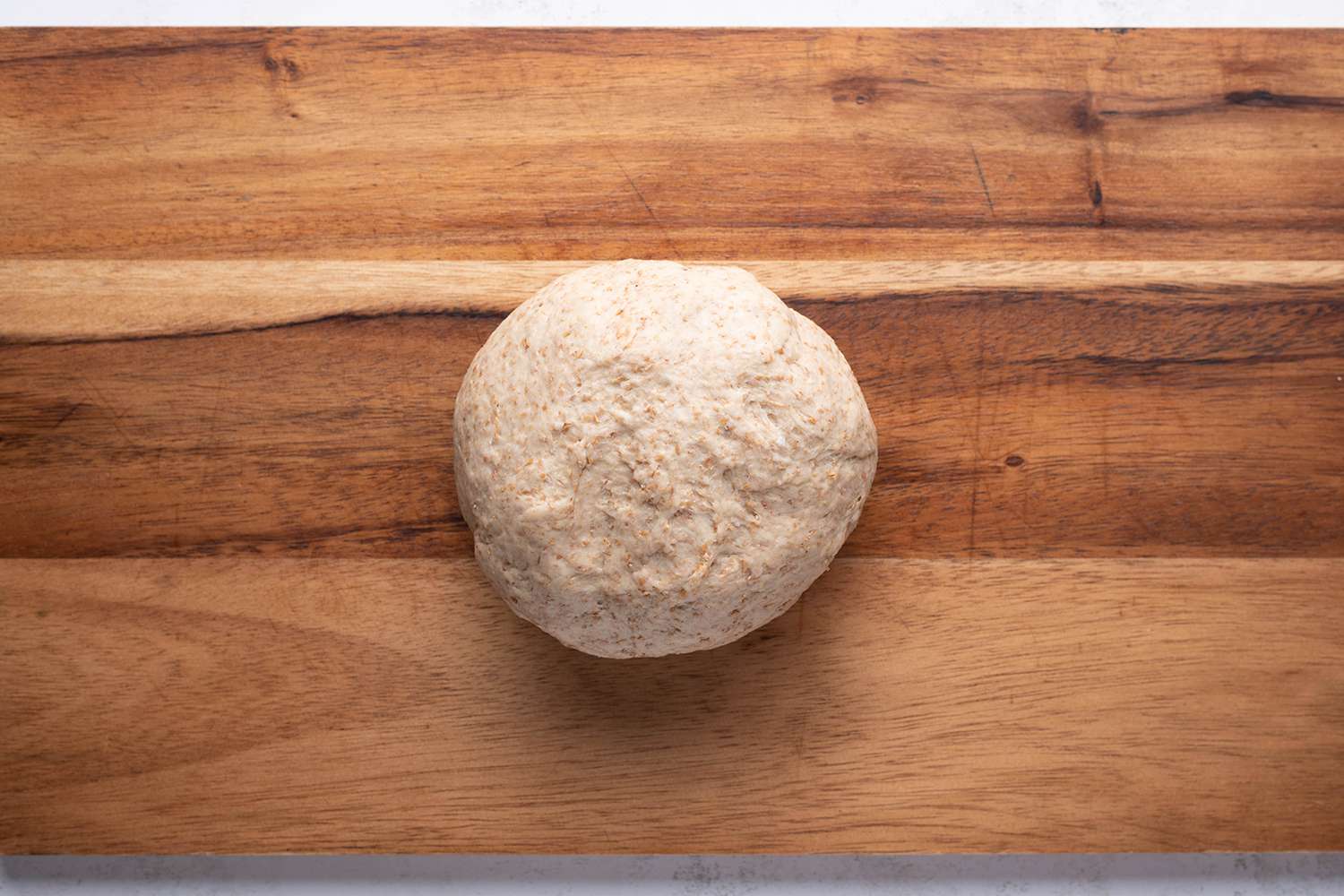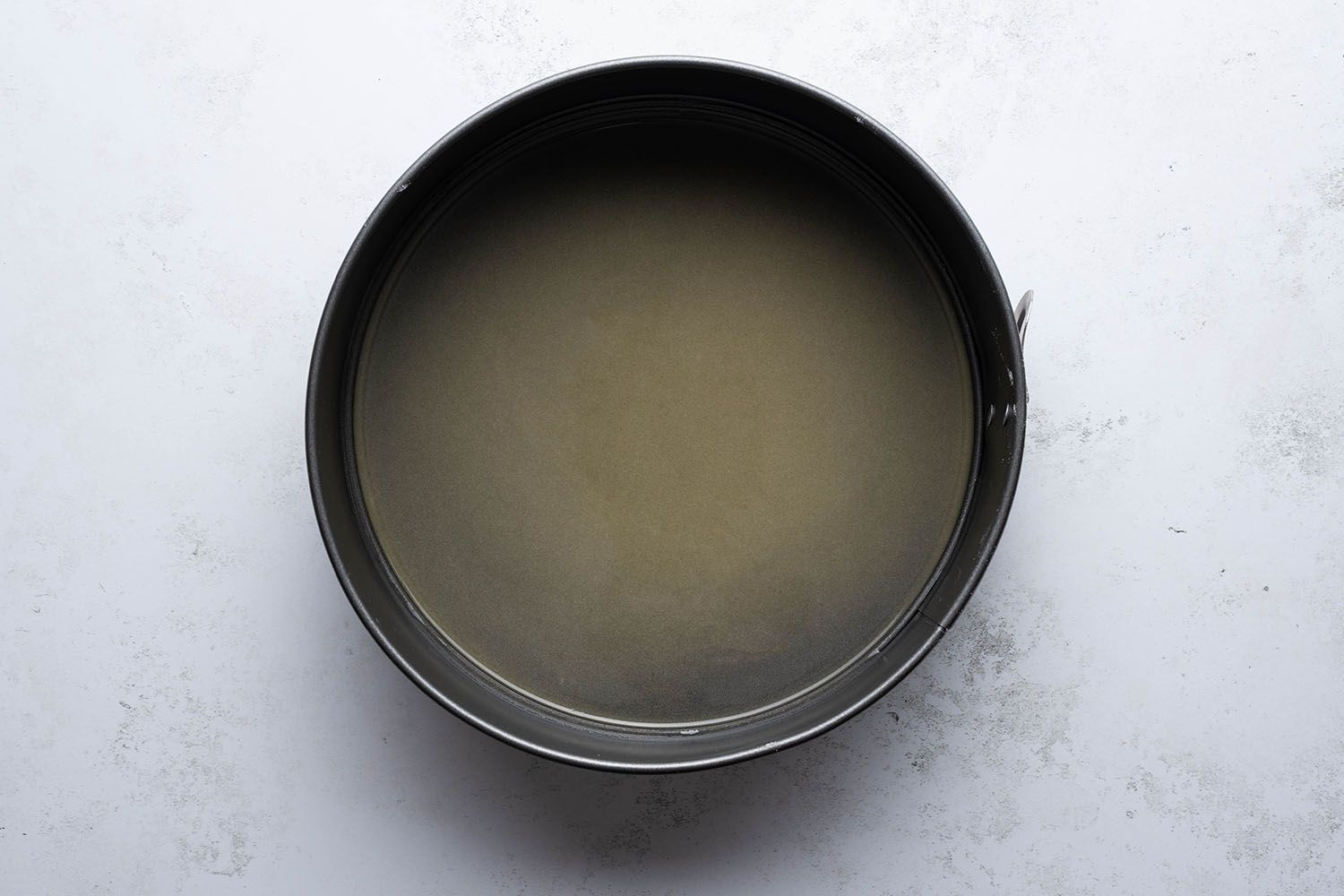This bread is an homage to the black pepper focaccia at Panera Bread, so if you find yourself ordering it each time you’re dining in, this is the recipe for you! This bread is light and fluffy on the inside with a crispy, crunchy outside texture that is traditional to focaccia.
Baked in a round cake pan, rather than the typical sheet pan, this focaccia climbs up the edges, resulting in a light-as-air texture and crumb. The bite from the black pepper is delicious and pairs well when dipped in hummus or smeared with soft butter and flaky sea salt.
This is a fairly simple and straightforward bread recipe with two separate rise times, but don’t let that intimidate you. Rise times are hands-off for you, so the amount of active time you actually need to be in the kitchen is brief. This is a great bread if you’re just diving into the world of yeasted dough. If you prefer a thinner focaccia, divide the dough into two 9-inch cake rounds instead of baking it in one 10-inch. Focaccia is best served and eaten the day it’s made. Nothing tastes better than warm, fresh from the oven focaccia!
“This black pepper focaccia was good, and it had a little extra fiber with the whole wheat flour. The stand mixer makes it easy and leaves the dough well-hydrated and somewhat sticky, which is a bit harder to do when kneading by hand. The peppery bread was great with a pasta dinner.” — Diana Rattray
A Note From Our Recipe Tester
Ingredients
-
1 cup warm water
-
2 teaspoons honey
-
2 1/4 teaspoons active dry yeast (1 packet)
-
2 cups all-purpose flour, more as needed
-
1 cup whole wheat flour
-
2 teaspoons flaky sea salt, such as Maldon, divided
-
1 teaspoon cracked black pepper, divided
-
1/4 cup olive oil, more as needed
Steps to Make It
-
Gather the ingredients.

The Spruce Eats / Julia Hartbeck
-
Add warm water and honey to the bowl of a stand mixer fitted with the dough hook attachment. Stir to combine.

The Spruce Eats / Julia Hartbeck
-
Sprinkle the yeast over the mixture and let it sit until the mixture has bloomed and looks foamy, 5 to 10 minutes.

The Spruce Eats / Julia Hartbeck
-
Sift the 2 cups all-purpose flour and 1 cup of whole wheat flour together into a large bowl. Stir in 1 teaspoon salt and 1/2 teaspoons cracked black pepper.

The Spruce Eats / Julia Hartbeck
-
Add 1/4 cup olive oil to the stand mixer. Mix on medium-low speed until combined. Gradually add the sifted flours to the stand mixer a bit at a time, making sure the mixture is well combined before adding more.

The Spruce Eats / Julia Hartbeck
-
Once all the flour is added, continue mixing the dough until it becomes smooth and elastic, about 5 minutes. Add more flour 1 tablespoon at a time if the dough is too sticky and isn’t pulling away from the sides of the bowl.

The Spruce Eats / Julia Hartbeck
-
Remove dough from the bowl, and use your hands to shape it into a ball.

The Spruce Eats / Julia Hartbeck
-
Grease a large bowl with olive oil. Add the dough ball, tossing it in the bowl to coat. Cover with a clean, damp towel, and transfer to a warm place. Let it rise for 60 minutes or until the dough doubles in size.

The Spruce Eats / Julia Hartbeck
-
Position a rack in the center of the oven and heat to 400 F. To a round, 10-inch cake pan, add 3 tablespoons of oil and 2 tablespoons flour. Mix until combined (this should be a sludge-type mixture which prevents the dough from sticking to the pan and essentially fries the bottom, creating a crispy texture). Spread the mixture evenly on the bottom of the pan.

The Spruce Eats / Julia Hartbeck
-
Add the dough ball to the pan and spread evenly to the edges. Cover, and let rise until visibly puffed, about 30 minutes.

The Spruce Eats / Julia Hartbeck
-
Drizzle 1 to 2 tablespoons oil on top of the dough. Use your fingers to create deep wells over the surface of the dough.

The Spruce Eats / Julia Hartbeck
-
Top with remaining 1 teaspoon flaky salt and 1/2 teaspoon cracked black pepper.

The Spruce Eats / Julia Hartbeck
-
Bake until golden, 20 to 30 minutes. Cool slightly before removing from the pan and serving.

The Spruce Eats / Julia Hartbeck
Making Focaccia Without a Mixer
This dough is easily made by hand, but will require a bit more elbow grease. Instead of kneading in the stand mixer, roll the dough out onto a lightly floured surface and knead by hand for about 10 minutes, or until the dough is smooth and holds its shape.
Variations
- If you prefer a thinner focaccia, you can divide the dough into two 9-inch cake rounds instead of baking it in one 10-inch.
- For a fun addition, try using garlic or truffle infused olive oil in the dough. This will give a fun flavor to the dough while still keeping black pepper the star.
- Rather than all black pepper, try a green peppercorns, pink peppercorns, or a mixture.
How to Store Focaccia
- Store leftover focaccia in a plastic bag on the countertop for up to 3 days. To refresh, reheat slices in the oven or toaster until warmed through.
- To freeze focaccia, wrap the loaf or individual slices in plastic wrap and foil. Freeze for up to 1 month.
- To reheat frozen focaccia, defrost it on the countertop for a few hours, then unwrap it, place it on a baking sheet, and heat it in a 375 F oven for about 5 to 8 minutes.
What’s the difference between focaccia and other bread?
Most breads are made with water, salt, yeast, and flour. Focaccia is enriched with olive oil, creating a soft, supple inside texture. Dousing the dough in more oil before it bakes helps create the crunchy crust focaccia is known for.


